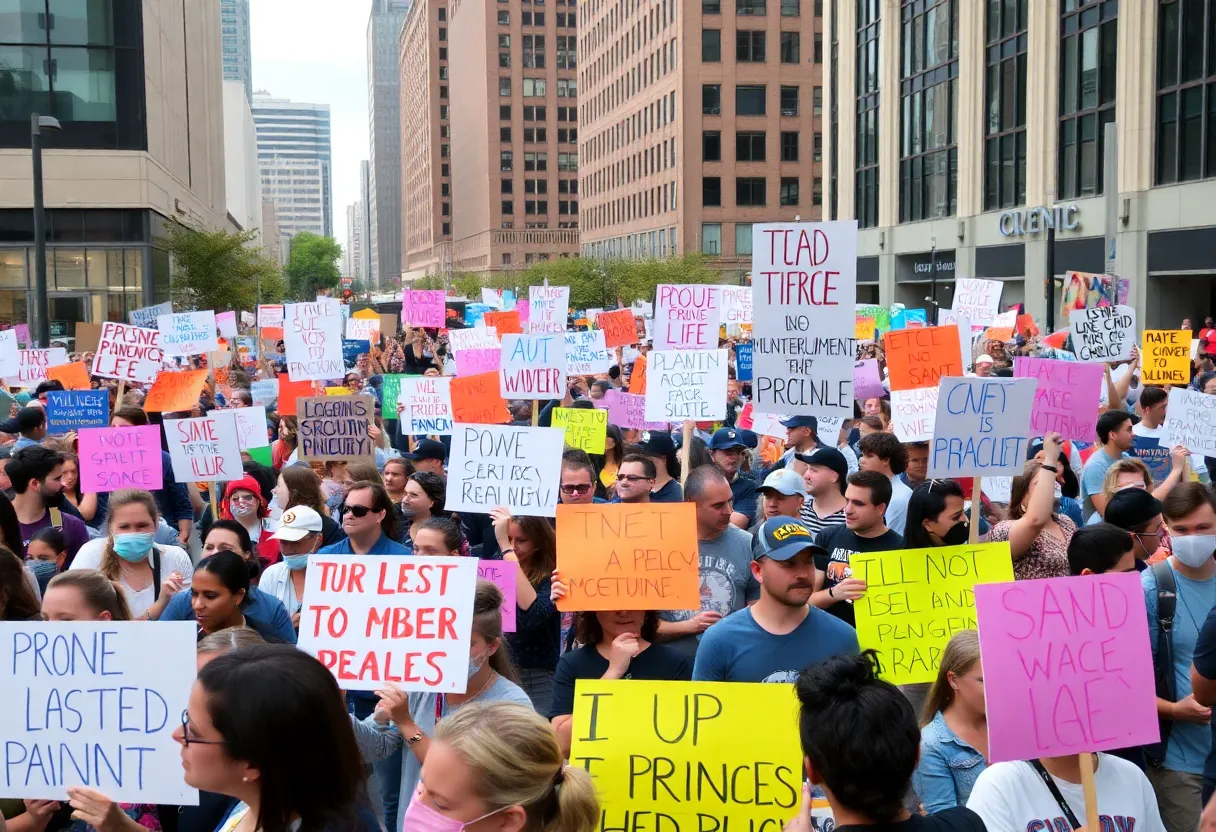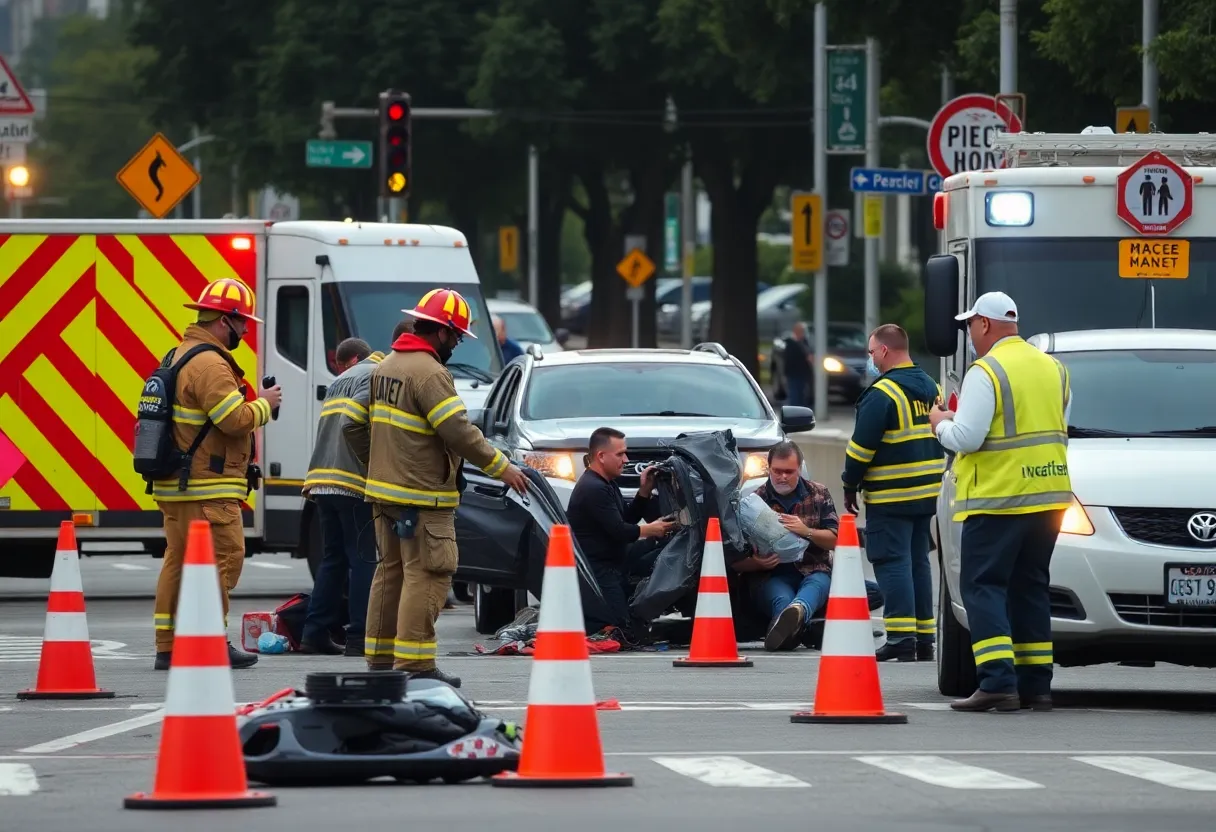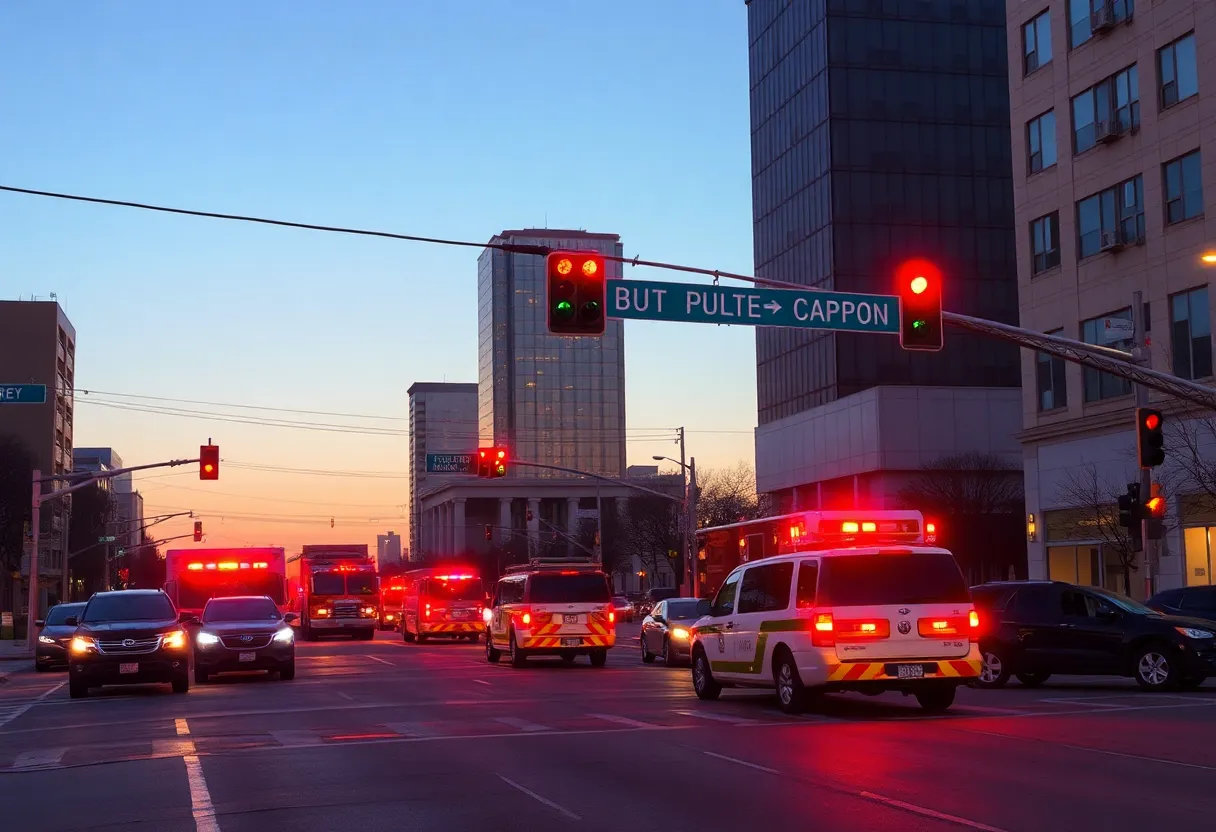Oklahoma City, October 20, 2025
Oklahoma City witnessed a significant turnout for the ‘No Kings’ protests, aimed at expressing discontent with Trump administration policies. Thousands participated in peaceful demonstrations, highlighting issues such as immigration and healthcare. This statewide movement saw similar protests in 18 other Oklahoma cities, showcasing a united call for change. Organizers emphasized non-violent engagement, contributing to a disciplined environment during the rallies, with no reports of arrests. As participants voiced concerns over various policies, the movement underscores the power of civic engagement and grassroots activism.
### Oklahoma City Witnesses Massive ‘No Kings’ Protests Against Trump Policies
Oklahoma City became the epicenter of widespread demonstrations on Saturday as thousands gathered for the ‘No Kings’ protests targeting the Trump administration. These events, part of a coordinated effort across the state, highlighted public frustration with policies on immigration, healthcare, and broader governance. Organizers emphasized the peaceful nature of the rallies, with no reports of arrests or major incidents, though local law enforcement maintained a visible presence to ensure public safety.
The protests drew an estimated several thousand participants in Oklahoma City alone, filling streets and public spaces with chants and signs calling for immediate policy reforms. Demonstrators focused their messages on key issues, including stricter immigration enforcement and changes to healthcare access, reflecting ongoing national debates. Similar events unfolded in 18 other Oklahoma cities, amplifying the statewide call for change and showcasing a unified front among participants from diverse backgrounds.
#### Details of the Demonstrations
The ‘No Kings’ rallies kicked off in the morning across multiple locations, with the largest turnout in Oklahoma City‘s downtown area. Crowds marched along major avenues, pausing at key landmarks to voice their concerns. In smaller cities like Tulsa, Norman, and Lawton, gatherings ranged from hundreds to over a thousand people, each tailored to local community issues but aligned under the same banner. Organizers coordinated through community networks to promote non-violent participation, distributing guidelines that stressed respectful engagement and adherence to traffic laws.
Law enforcement agencies, including city police and state troopers, monitored the events closely. Officers positioned themselves along routes and at assembly points, ready to address any potential disruptions. Despite the large crowds, interactions remained calm, with authorities reporting no need for interventions. This setup allowed the protests to proceed without halting daily city functions, though some road closures were implemented temporarily for safety.
Supporting details from the events reveal a strong emphasis on family-friendly participation. Many attendees brought children, underscoring the personal stakes in topics like healthcare affordability and family separations due to immigration policies. Booths set up by volunteers provided information on related advocacy groups, but the focus stayed on the core messages rather than recruitment. The absence of arrests highlights the disciplined approach taken by both protesters and officials.
#### Broader Context and Statewide Impact
The ‘No Kings’ protests stem from a growing movement that critiques executive overreach and policy decisions perceived as harmful to everyday Americans. In Oklahoma, this resonated particularly with communities affected by federal immigration crackdowns and healthcare reforms under the Trump administration. The name ‘No Kings’ symbolizes a rejection of authoritarian-style leadership, drawing from historical American ideals of checks and balances.
These demonstrations mark the fifth annual iteration in some areas, with participation swelling this year amid heightened national tensions. Across the 19 Oklahoma cities involved, the events represented a cross-section of the state’s population, from urban professionals to rural residents. While centered on federal policies, local leaders noted how these issues intersect with state-level challenges, such as funding for public health services and support for immigrant families.
The peaceful execution of the protests sets a positive example for civic engagement, demonstrating that large-scale dissent can occur without escalating to conflict. As the day concluded, participants dispersed with a sense of solidarity, planning follow-up actions like petitions and town halls to sustain momentum. This collective effort underscores the role of grassroots activism in influencing policy discussions at both state and national levels.
In the wake of the rallies, community reflections focused on the importance of ongoing dialogue. While no immediate policy shifts were announced, the visibility of the protests could pressure lawmakers to address constituent concerns more directly. For residents of Oklahoma City and beyond, the events served as a reminder of the power of unified voices in a democratic process.
(Word count: 612)
FAQ
What were the main focuses of the ‘No Kings’ protests in Oklahoma City?
The protests focused on issues like immigration and healthcare, targeting policies of the Trump administration.
How many people participated in the Oklahoma City protest?
Thousands rallied in Oklahoma City for the ‘No Kings’ protests.
Were the demonstrations peaceful?
Organizers report peaceful demonstrations with no arrests.
How many cities in Oklahoma had similar events?
Similar events in 18 other Oklahoma cities drew crowds demanding policy changes.
What role did law enforcement play?
Law enforcement monitored for safety.
Key Features of the ‘No Kings’ Protests
| Feature | Description |
|---|---|
| Location Scope | State-level across 19 Oklahoma cities, centered in Oklahoma City |
| Participation | Thousands in Oklahoma City; crowds in 18 other cities |
| Main Issues | Immigration and healthcare policies of the Trump administration |
| Nature of Events | Peaceful demonstrations with no arrests |
| Law Enforcement | Monitored for safety throughout the state |
Deeper Dive: News & Info About This Topic
HERE Resources
Superintendent Faces Key Decision on School Bible Mandate
Uncertainty Surrounds Bible-in-Schools Mandate as Classes Resume
Oklahoma City Schools Urgently Need Comprehensive Reforms
Turning Point USA Event at University of Oklahoma Sparks Debates
Oklahoma City Hosts Significant ‘No Kings’ Protests
Thousands Join ‘No Kings’ Protest Against Trump Administration in Oklahoma City
Heavy Security at University of Oklahoma for Governor’s Speech
Thousands Gather for ‘No Kings’ Protests in Oklahoma City
Oklahoma Public Schools Rescind Bible Distribution Mandate
Governor Stitt Unveils Education Reforms and Economic Plans





